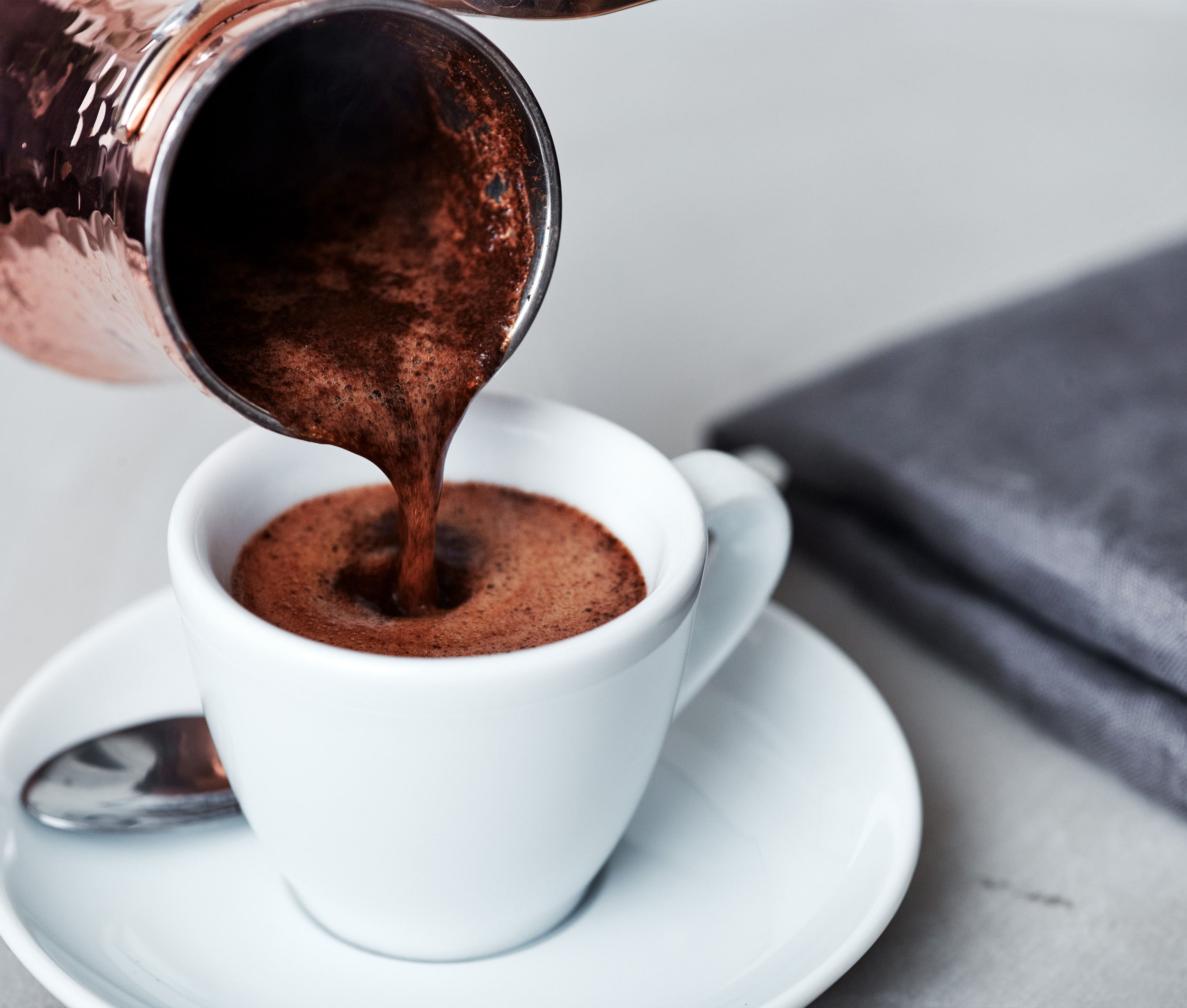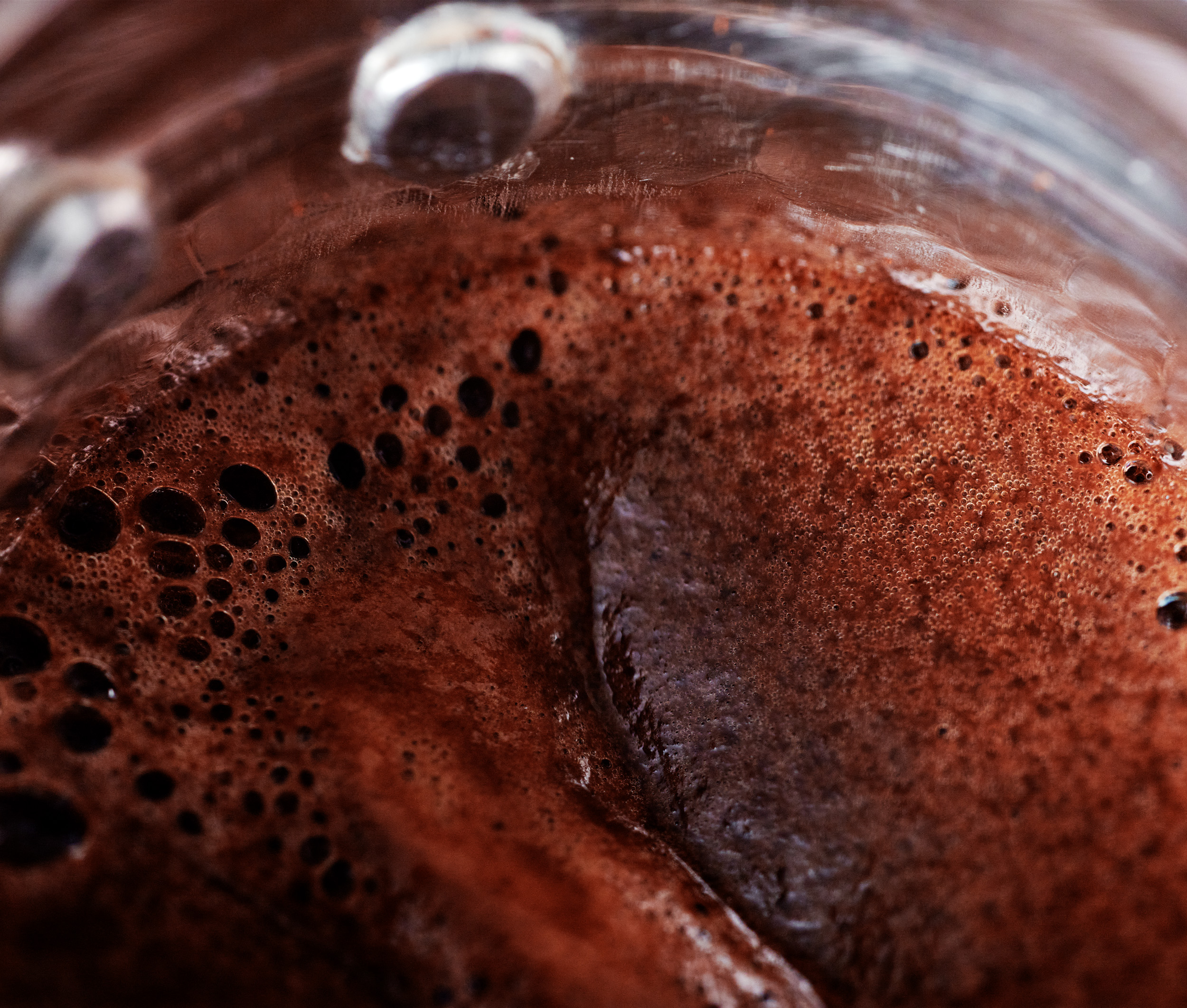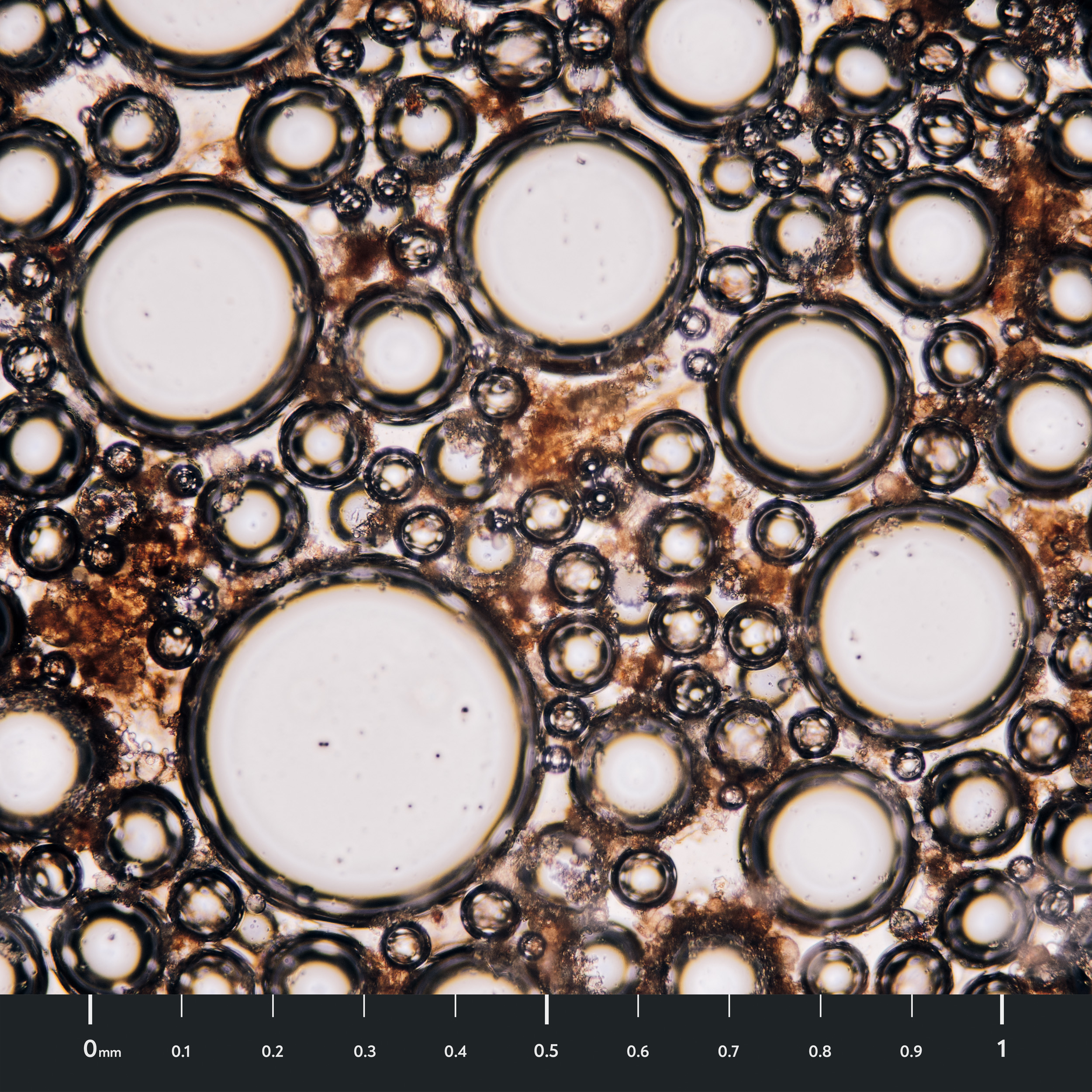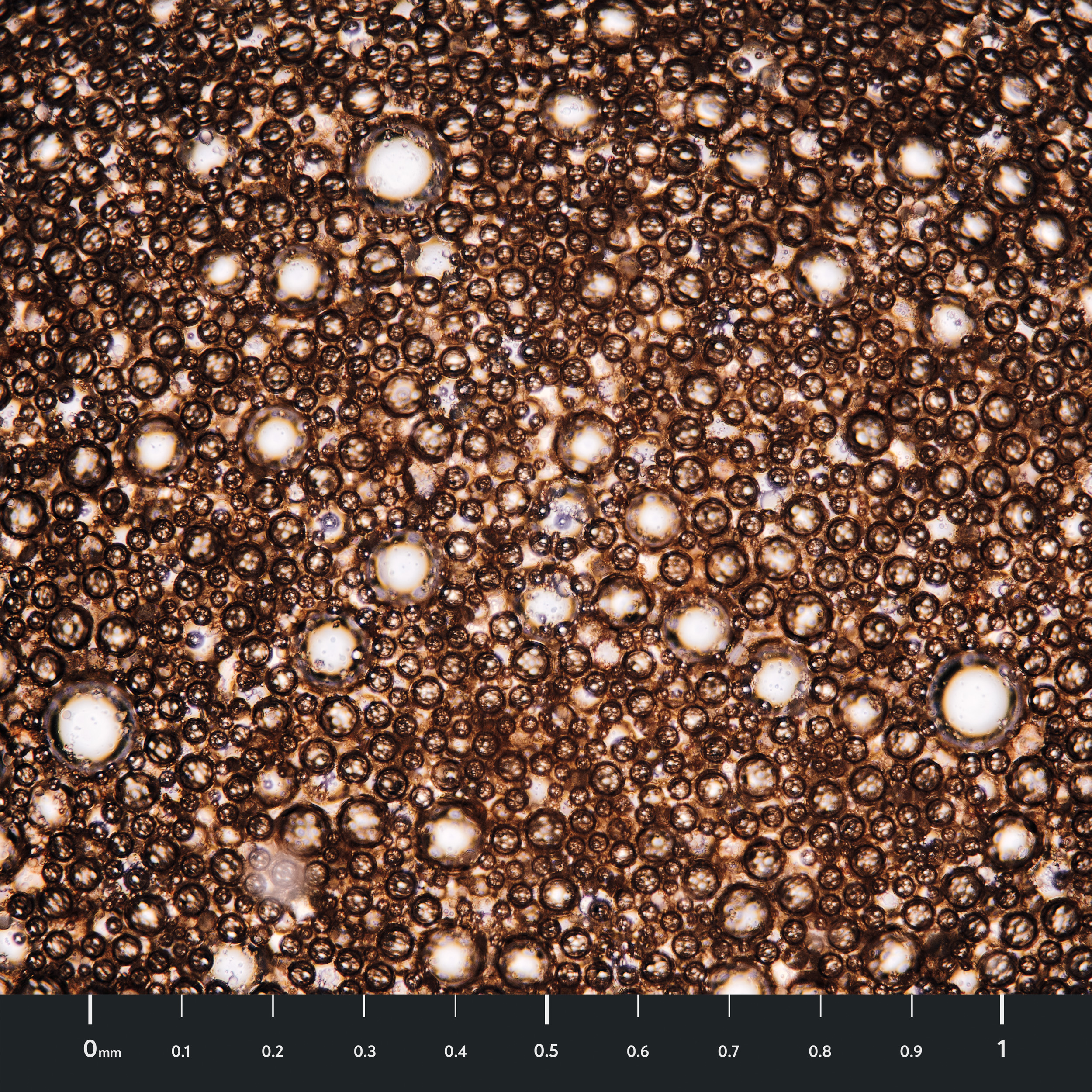Raghweh
Cezve is famous for the rich foam layer (‘raghweh’ in Arabic) that is produced during the brewing process. As the slurry temperature surpasses approximately 88°C, a thick layer of foam begins to form on the surface of the beverage. Comparing raghweh and crema under a microscope, we observed that the cell structure of raghweh tends to be a little larger than crema.
The volume of a cezve slurry can temporarily double in size during the formation of raghweh. Traditional cezve recipes usually allow the raghweh to rise to just beneath the rim of the cezve. The brew will then be rapidly decanted into a cup — foam, grinds, and all — usually in a single pour.
Raghweh rising in a cezve.
A safety warning: Extreme care and attention is required during the brewing process because if left unattended, a cezve slurry will boil over and can cause serious injury. We recommend you always use a thermometer when brewing cezve and in general, we advise you to decant your cezve into a cup before it reaches 93°C.
Raghweh and Crema. Left: Cezve, right: espressso.
These two microscope slides taken at 10 times magnification, compare raghweh made in a cezve to crema from espresso. The foam samples have been pressed between two glass slides to produce a more stable 2D foam. This method allows us to photograph the foams at very high magnification, and to compare the relative differences in pore size.
Presentation Standards and Serving Temperature
After a cezve brew is decanted into a cup, the raghweh can be very persistent, sometimes lasting for several minutes. Like espresso crema, it usually breaks up enough to reveal the coffee beneath the foam layer after a couple of minutes. In the Cezve/Ibrik Championships, the scoring criteria for raghweh are almost identical to those for crema in the World Barista Championships.




